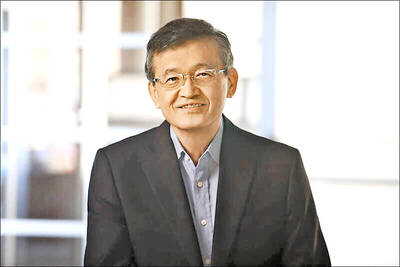ELECTRONICS
ASMPT draws interest
ASMPT Ltd (先進太平洋股份有限公司), a semiconductor and electronics equipment maker, is attracting takeover interest from private equity firms, people with knowledge of the matter said. Alternative investment firm PAG is among those that have expressed interest in taking the Hong Kong-listed company private, said the people, who asked not to be identified discussing confidential information. PAG has sounded out several lenders about financing the potential deal, the people said. Founded in 1975, Singapore-headquartered ASMPT has more than 12,000 employees and operates in more than 30 countries, its Web site says.
ENERGY
Subsidies to hit US$1.65tn
The amount of money spent by governments subsidizing energy costs since Russia’s invasion of Ukraine is set to reach US$1.65 trillion by the end of the year, credit ratings agency S&P Global estimated. The firm calculated the total soared to US$10 trillion once COVID-19 pandemic spending was added on and that this year would see the overall stock of global sovereign debt reach a record US$65 trillion in absolute terms. S&P based the figures on the 137 countries that it provides credit scores for. It forecast those countries would borrow the equivalent of US$10.5 trillion this year, below the record US$11.5 trillion set in 2021, but 40 percent higher than the pre-pandemic average. Commercial sovereign debt as a proportion of world GDP would increase to about 66 percent this year from just under 64 percent last year, although that would be well below the pandemic-induced peak of 74 percent of GDP in 2020.
AVIATION
Boeing expands in India
Boeing Co yesterday said it would set up a facility in India to convert 737 passenger planes into dedicated freighters to tap into regional and global demand for the service. The investment, which adds to the US manufacturer’s expansion into India on top of a record plane order by flag carrier Air India, comes despite a global economic slowdown that has weakened the global air cargo market. The International Air Transport Association said global cargo demand in January fell almost 15 percent year-on-year. Air freight rates were 28 percent below the levels seen at the same time last year, data provider WorldACD said on Thursday. Boeing said it would set up the conversion facility in Hyderabad with Indian maintenance, repair and overhaul provider GMR Aero Technic. The deal adds to Boeing’s US$1 billion supply chain sourcing from India and should help support India’s ambitions to become a global cargo hub.
AUTOMAKERS
Nissan EV stalls
Nissan Motor Co’s new Ariya electric vehicle (EV) has been hampered by problems at its high-tech production line, four people familiar with the matter said, slowing delivery of a car designed to put the automaker on the road to a comeback. Unveiled in 2020 to strong reviews, the crossover was Nissan’s first all-new global car in five years and signaled an intent to turn the corner on the turmoil that followed the ouster of former head Carlos Ghosn. However, production is running at least one-third below plan, keeping the Ariya from shipping to new customers, according to three of the people and production planning notes reviewed by Reuters. The shortfall represents a lost opportunity to capitalize on the Ariya’s buzz and test demand for the first of 19 new EVs Nissan plans to roll out by 2030.

Intel Corp chief executive officer Lip-Bu Tan (陳立武) is expected to meet with Taiwanese suppliers next month in conjunction with the opening of the Computex Taipei trade show, supply chain sources said on Monday. The visit, the first for Tan to Taiwan since assuming his new post last month, would be aimed at enhancing Intel’s ties with suppliers in Taiwan as he attempts to help turn around the struggling US chipmaker, the sources said. Tan is to hold a banquet to celebrate Intel’s 40-year presence in Taiwan before Computex opens on May 20 and invite dozens of Taiwanese suppliers to exchange views

Application-specific integrated circuit designer Faraday Technology Corp (智原) yesterday said that although revenue this quarter would decline 30 percent from last quarter, it retained its full-year forecast of revenue growth of 100 percent. The company attributed the quarterly drop to a slowdown in customers’ production of chips using Faraday’s advanced packaging technology. The company is still confident about its revenue growth this year, given its strong “design-win” — or the projects it won to help customers design their chips, Faraday president Steve Wang (王國雍) told an online earnings conference. “The design-win this year is better than we expected. We believe we will win

Chizuko Kimura has become the first female sushi chef in the world to win a Michelin star, fulfilling a promise she made to her dying husband to continue his legacy. The 54-year-old Japanese chef regained the Michelin star her late husband, Shunei Kimura, won three years ago for their Sushi Shunei restaurant in Paris. For Shunei Kimura, the star was a dream come true. However, the joy was short-lived. He died from cancer just three months later in June 2022. He was 65. The following year, the restaurant in the heart of Montmartre lost its star rating. Chizuko Kimura insisted that the new star is still down

While China’s leaders use their economic and political might to fight US President Donald Trump’s trade war “to the end,” its army of social media soldiers are embarking on a more humorous campaign online. Trump’s tariff blitz has seen Washington and Beijing impose eye-watering duties on imports from the other, fanning a standoff between the economic superpowers that has sparked global recession fears and sent markets into a tailspin. Trump says his policy is a response to years of being “ripped off” by other countries and aims to bring manufacturing to the US, forcing companies to employ US workers. However, China’s online warriors